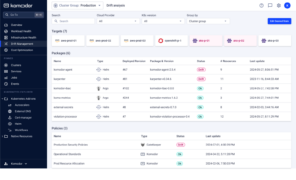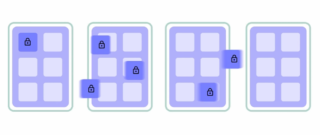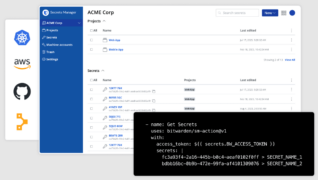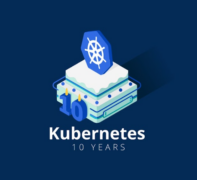Topic: kubernetes
KubeCon + CloudNativeCon Europe Day 2: k0s and k0smotron join CNCF Sandbox, New Relic announces eAPM, and Valkey 8.1 released
KubeCon + CloudNativeCon Europe, taking place in London, continues on through its second day, bringing with it a number of new announcements from companies in the cloud-native space. Here are a couple of highlights from day 2 of KubeCon + CloudNativeCon Europe. k0s and k0smotron join CNCF Sandbox Mirantis announced that its open source projects … continue reading
KubeCon + CloudNativeCon Europe Day 1: Argo CD v3 pre-release, Golden Kubestronaut program, Red Hat Developer Hub 1.5, and more
KubeCon + CloudNativeCon Europe kicked off today in London, bringing together professionals in the Kubernetes space for a week of informative talks and networking opportunities. A number of companies in the Kubernetes space have announced updates at the event, along with the Cloud Native Computing Foundation (CNCF) itself, the organization that maintains Kubernetes and hosts … continue reading
Komodor launches new features to address Kubernetes configuration drift
Komodor, a company that simplifies Kubernetes management, has just announced the launch of new capabilities for detecting, investigating, and remediating Kubernetes configuration drift. Configuration drift occurs when Kubernetes clusters gradually change from their intended state, which can eventually impact operations via unexpected failures, inefficient resource utilization, and compliance gaps. According to Komodor, configuration drift can … continue reading
Top 8 reliability issues for running Kubernetes at scale
Kubernetes has become popular for many organizations running enterprise and production-grade containerized applications. It allows users to efficiently run and scale containers in production based on certain criteria that engineers need to configure. While K8s offers a great deal of flexibility, incorrect or inadequate configurations can sometimes lead to degraded performance and hamper reliability if … continue reading
ScaleOps launches solution for optimizing Kubernetes clusters
ScaleOps, a company that provides cloud resource management solutions, has announced the general availability of Pod Placement, a capability that provides ongoing optimization of Kubernetes clusters. According to the company, Kubernetes clusters often have workloads with scheduling and eviction constraints that are permanently tied to specific computing nodes, and these eviction rules can block resource … continue reading
Red Hat unveils OpenShift Virtualization Engine, Connectivity Link offerings
Red Hat is announcing the release of two new offerings today: Red Hat OpenShift Virtualization Engine and Red Hat Connectivity Link. Red Hat OpenShift Virtualization Engine Red Hat OpenShift Virtualization Engine is a new version of OpenShift designed entirely for virtualization workloads. According to the company, this new version offers features to help deploy, manage, … continue reading
Mastering Day 2: Optimizing Kubernetes health and performance
Mastering Kubernetes health and performance goes beyond the initial setup. The real challenge starts on Day 2, where operations teams must engage in a continuous cycle of monitoring, identifying, and resolving issues before they disrupt operations. This involves addressing two types of issues: critical real-time problems that can lead to immediate downtime, and ongoing reliability … continue reading
KTE – ITOps Times Open Source Project of the Week
KTE is an open source Kubernetes testing environment for the major cloud providers’ Kubernetes services: Amazon Elastic Kubernetes Service (EKS), Google Kubernetes Engine (GKE), and Azure Kubernetes Service (AKS). It provides a safe and controlled space for discovering issues and vulnerabilities in Kubernetes configurations before they make it to production. KTE allows for the simulation … continue reading
Kubernetes v1.31 released; 11 new features now in GA
Some 11 features have graduated to stable in today’s release of Kubernetes v1.31, the first since the project celebrated its 10th anniversary this year. The release’s theme, here in the dog days of summer, is Elli, a playful pup meant to reflect the spirit and joy of the community of contributors. Among the highlights of … continue reading
Bitwarden brings its secrets manager to Kubernetes
Password manager Bitwarden has announced it is beginning to integrate its Secrets Manager into Kubernetes workflows. This functionality is currently in public beta and will enable DevOps teams to securely manage secrets like API keys, passwords, and tokens across their Kubernetes environment. The integration is done via an operator that is deployed by the Helm … continue reading
Kubernetes at 10: Where it began, and where it’s going
Ten years ago, the Kubernetes project was first announced, and then soon after, the Cloud Native Computing Foundation (CNCF) was formed to become the home for it. Chris Aniszczyk was the founding executive director at the time, and has been around for the project’s entire history once it was donated by Google to the CNCF. … continue reading
Kubernetes – ITOps Times Open Source Project of the Week
When we first started the ITOps Open Source Project of the Week series, Kubernetes was already such a large and popular project that no one needed us to tell them about it, so it’s never actually been featured in this series. But given that the project is celebrating its 10 year anniversary this month, we … continue reading















